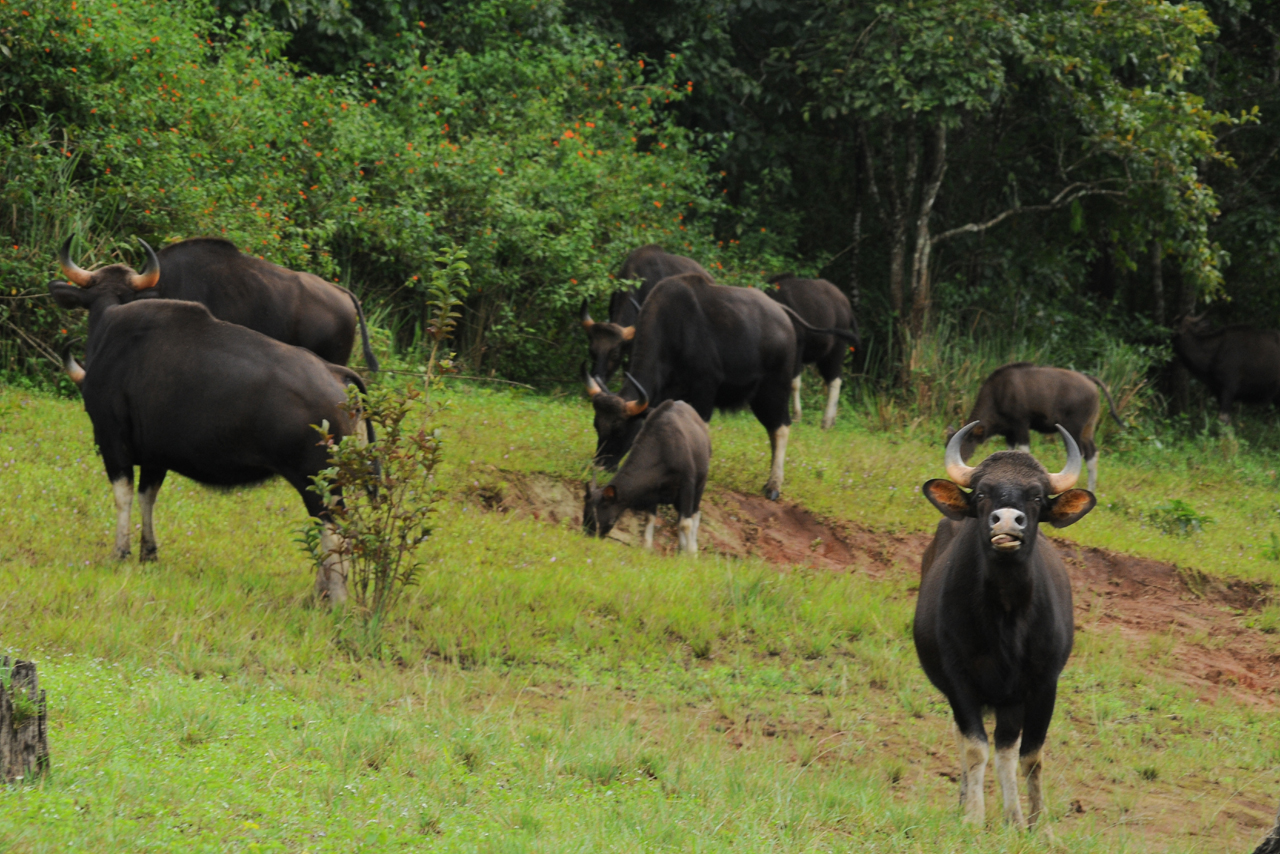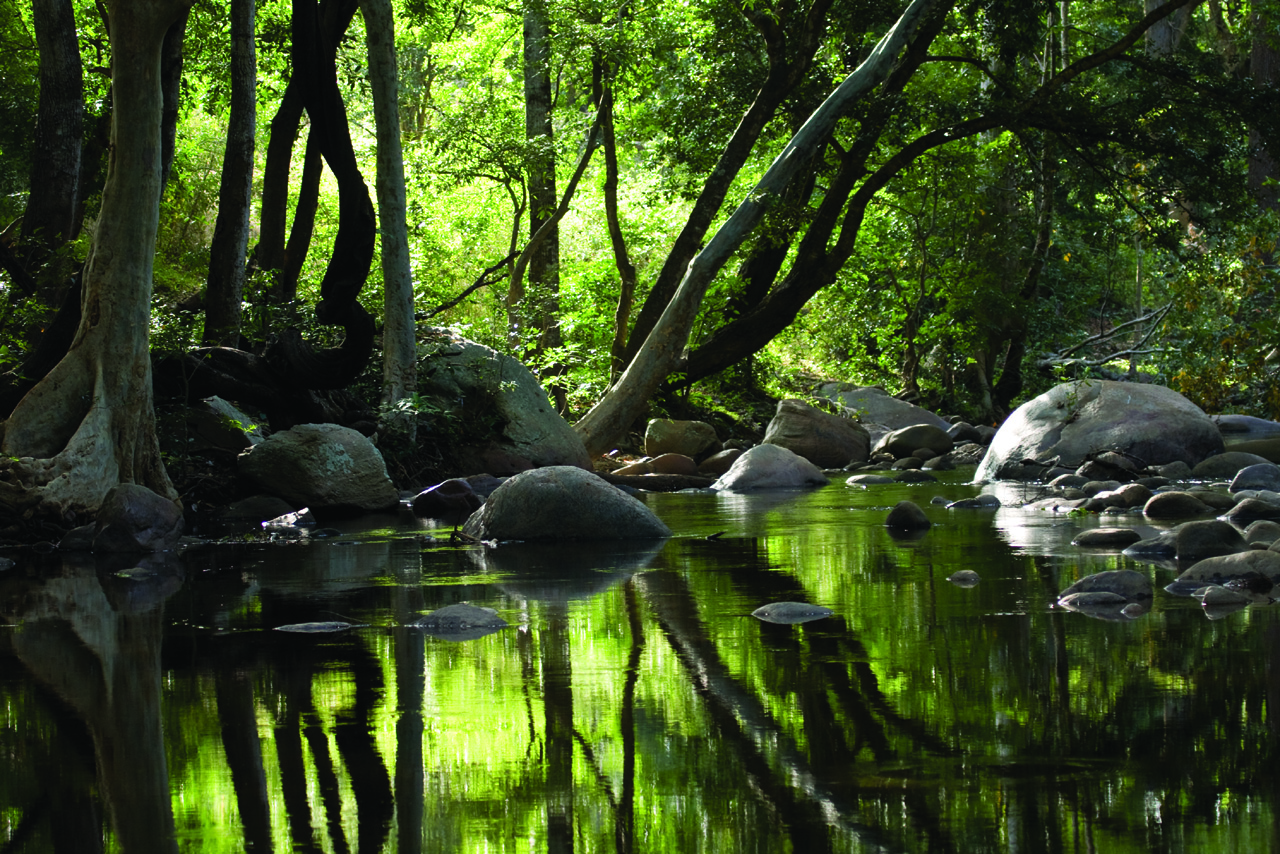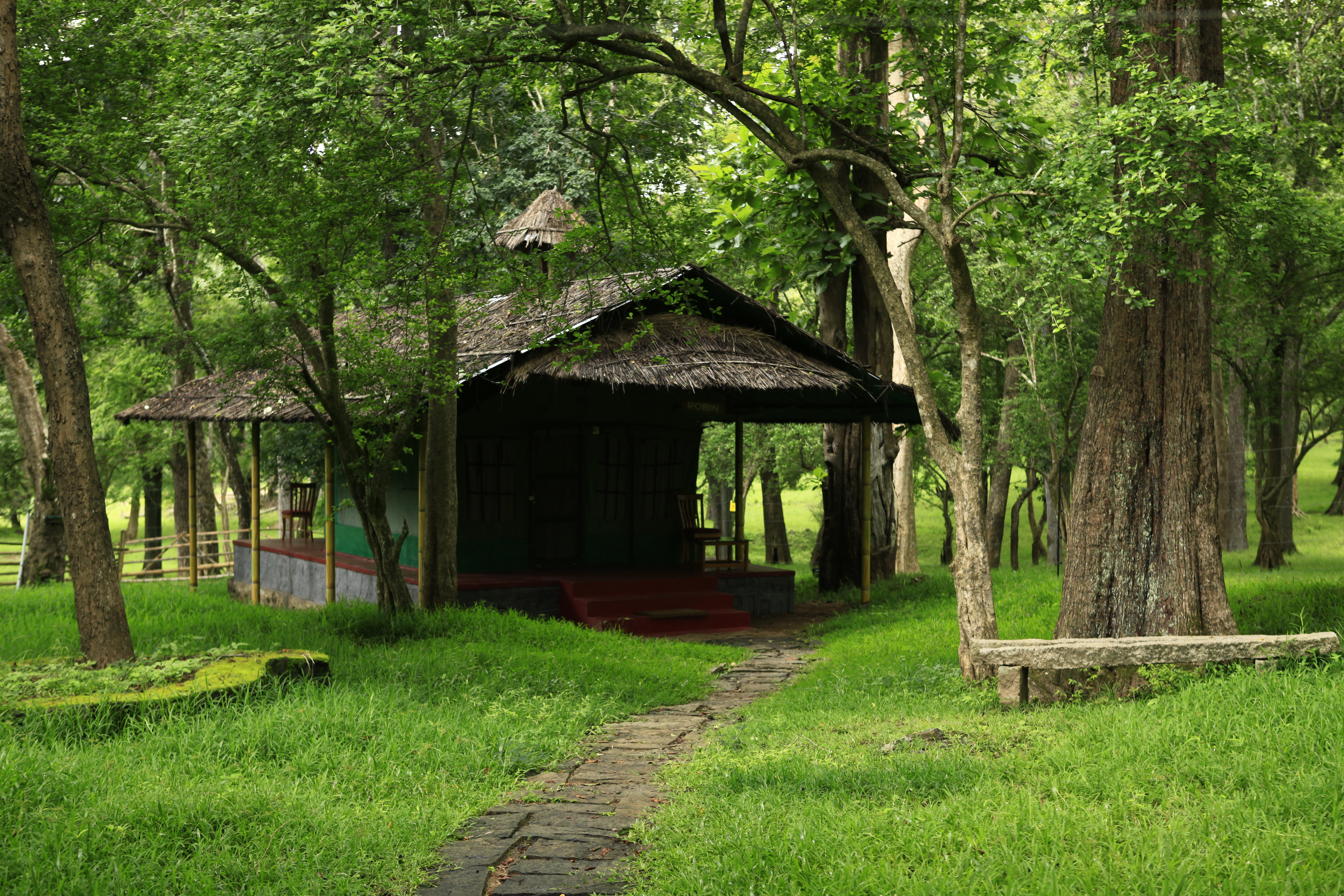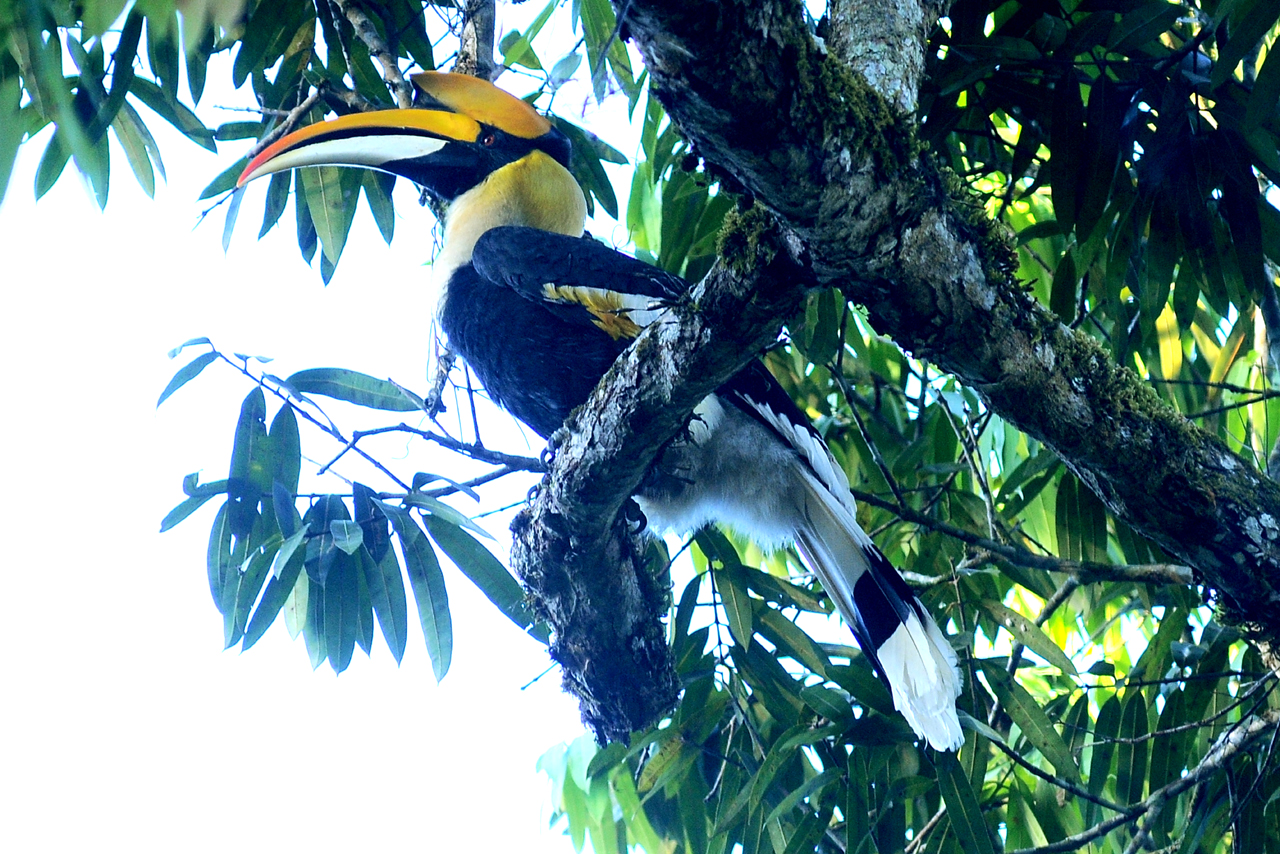The Emerald Jewels of the Western Ghats: A Definitive Guide to Kerala’s Forests and Wildlife Sanctuaries

I. Introduction: The Land Where the Monsoon Meets the Mountains
Kerala, often celebrated as ‘God’s Own Country,’ owes its distinctive natural opulence to a single geographical feature: the Western Ghats. This ancient mountain chain, a continuous stretch running parallel to the western coast of the Indian peninsula, provides the foundation for Kerala's unparalleled biodiversity and hydrological stability. The integrity of Kerala’s lush forests is intrinsically tied to the global ecological function of the Western Ghats, marking it as a conservation area of global priority.
A. Kerala's Foundational Link to the Western Ghats
The Western Ghats are not merely a scenic backdrop; they are a functioning, geologically ancient ecosystem recognized globally as one of the world's eight 'hottest hotspots' of biological diversity [1]Myers, N. et al. (2000). Biodiversity hotspots for conservation priorities. Nature. [2]UNESCO World Heritage Centre. (2012). Western Ghats. [3]WWF India. (2020). The Western Ghats: An ecological profile.. This mountain range predates the formation of the Himalayas, allowing for millions of years of uninterrupted evolution that has fostered an exceptional level of endemism—species found nowhere else on Earth. The forests of this region are home to at least 325 globally threatened flora, fauna, bird, amphibian, reptile, and fish species, underscoring their critical role in preventing global extinction [1]UNESCO World Heritage Centre (2012)..
The ecological function of this mountain range extends far beyond biodiversity. The high montane forest ecosystems are instrumental in influencing the Indian monsoon weather pattern, effectively moderating the tropical climate of the region [1]Myers, N. (2000). Nature.. Kerala's very prosperity—its gifted rain, sumptuous rivers, and natural greenery—is fundamentally reliant on the health of the Ghats [4]Ministry of Environment, Forest and Climate Change, Government of India (2019).. Moreover, this vast range forms the catchment area for complex river systems that collectively drain nearly 40% of peninsular India [3]WWF India (2020).. Therefore, the imperative to protect Kerala’s forests is not solely an environmental concern; it is a fundamental pillar of hydrological and economic security for millions of people across South India. Protecting this biodiversity translates directly into safeguarding vital water resources and ensuring regional climate stability.
B. Protected Area Footprint in Kerala
In acknowledgement of this enormous ecological value, Kerala maintains a robust and comprehensive network of protected areas, demonstrating a long-term commitment to environmental stewardship. The state's protected area network totals 2,449.23 square kilometers, covering approximately 6.3% of the total geographical area of Kerala [5]Kerala Forest and Wildlife Department (2023). State Forest Report..
This network comprises six National Parks, encompassing a total area of 558.16 square kilometers, and fourteen Wildlife Sanctuaries, which protect 1,891.07 square kilometers [5]Kerala Forest and Wildlife Department (2023).. While the overall area under protection is significant, the reserves exhibit a mosaic of sizes and terrains. For instance, large areas like the Periyar Tiger Reserve are complemented by tiny, critically important reserves like Pampadum Shola National Park, which measures a mere 1.3 square kilometers [6]Forest Survey of India (2021).. This varied distribution highlights that maintaining conservation success relies heavily on securing ecological connectivity, particularly for small, specialized, and often fragmented habitats.
II. Kerala’s Forest Ecosystems: The Architecture of Endemism
Kerala's protected areas safeguard distinct ecosystems shaped by altitude, rainfall, and geological history. Understanding these habitat variations is essential to appreciating the diversity of life they shelter.
A. Diversity of Forest Types
The topography of the Western Ghats in Kerala ranges dramatically, resulting in a complex stratification of forest types:
- The Shola-Grassland Mosaic: At high altitudes, the landscape features rolling grasslands interspersed with dense, stunted patches of montane forests known locally as Sholas [7]Champion, H.G. & Seth, S.K. (1968). A Revised Survey of the Forest Types of India. [8]Pascal, J.P. (1988). Wet Evergreen Forests of the Western Ghats.. These "Southern Montane Wet Temperate Forests" are characterized by unique ecological processes and a special microclimate [9]Joshi, N.V. et al. (1997). Ecological Monographs.. They are critically important as hydrological regulators; each Shola patch functions as a perennial watercourse or 'mini-reservoir,' ensuring the retention of soil moisture and the slow, sustained release of rainwater, which feeds the headwaters of major river systems [8][9]Pascal, J.P. (1988); Joshi, N.V. (1997)..
- Tropical Evergreen and Deciduous Forests: Lower elevations support wet evergreen rainforests, which are true biodiversity hotspots, sustaining an extraordinary variety of plant and animal life [10]Daniels, R.J.R. (2001). National Biodiversity Strategy. [11]Kerala Forest Department (2019).. Moving eastward, the landscape transitions into moist deciduous and semi-evergreen forests, depending on local rainfall patterns [8][11]Pascal, J.P. (1988); Kerala Forest Department (2019)..
- The Unique Rain Shadow (Dry Scrub Forests): A notable exception to Kerala's generally humid climate is found in the eastern slopes, particularly in Chinnar Wildlife Sanctuary. Situated in the rain shadow of the Western Ghats, this area exhibits dry deciduous forests and the extremely rare thorny scrub forests, hosting specialized xerophytic species such as Acacia arabica and Opuntia stricta [12]Sasidharan, N. (2011). Biodiversity Documentation for Kerala. [13]Chinnar Wildlife Sanctuary Management Plan (2018–2028).. This ecological variation underscores the unique position of Kerala's protected areas.
B. Flagship Species and Endemic Fauna
The forests of Kerala are vital havens for several large, globally threatened species, often referred to as "landscape species," whose survival dictates the health of vast tracts of forest.
- Mammalian Icons and Endemic Primates: The region provides a safe refuge for the largest population of Asian elephants in the world, estimated at up to 10,000 individuals in the Nilgiri Hills area, as well as approximately 10% of the world’s tiger population [3]WWF India (2020).. However, the Western Ghats' true biological distinction lies in its endemic primate species. Kerala protects significant populations of the endangered Lion-tailed Macaque (LTM) (Macaca silenus) [14][15]IUCN Red List (2023); Kerala Forest Department (2022).. The survival of LTM is heavily dependent on the flowering of specific tree species like Cullenia exarillata in the forest, making the species highly specialized and ecologically fragile [16]Menon, S. & Poirier, F.E. (1996). Lion-tailed Macaques and Their Habitat.. This dependence means that any environmental stressor, such as climate variability or disease affecting this specific tree, carries an elevated risk of extinction for the macaque population, demanding meticulous habitat management. Other key endemic mammals include the Nilgiri Langur (Semnopithecus johnii), known for its glossy black coat and unique yellow-tinted head hair, and the elusive Nilgiri Marten (Martes gwatkinsii) [14][15]Kerala Forest Department (2022)..
- The Amphibian Sentinel: The Galaxy Frog: Kerala exhibits an exceptionally high level of biological diversity among amphibians, with 65% of its 179 species being endemic to the Western Ghats [1]UNESCO World Heritage Centre (2012).. In a progressive move, the Kerala Forest Department recently declared the Galaxy Frog as its flagship species for conservation [17][18]Kerala Forest Department (2023); The Hindu (2023).. This decision to elevate an amphibian to flagship status—only the second in India—represents a sophisticated shift in conservation focus. While charismatic megafauna like tigers are crucial, protecting the Galaxy Frog requires safeguarding its fragile micro-habitat, including the soil chemistry and associated soil microbes [18]The Hindu (2023).. This emphasis acknowledges that the foundational health of the biological pyramid and the resilience of the overall ecosystem depend on the smallest, most vulnerable inhabitants, rather than just large animals.
III. The High Range Conservation Corridor (Idukki District Focus)
The Idukki district, home to the Anamudi peak (2,695 m), represents the pinnacle of high-altitude conservation in Kerala, hosting several interconnected national parks and sanctuaries.
A. Periyar Tiger Reserve (PTR): India’s Management Benchmark

Image Credit: Tourism Department
Periyar, located around Thekkady, is perhaps the most famous and visited protected area in Kerala. It was established as a Tiger Reserve in 1978 and covers a significant area of 777.0 square kilometers, administratively spanning Idukki, Kottayam, and Pathanamthitta districts . The reserve has earned widespread acclaim for its operational success, having been recognized as the Best Managed Tiger Reserve among India's 54 Tiger Reserves in the Management Effectiveness Assessment of 2022 . Periyar is one of the wealthiest locations in terms of flora and fauna, protecting 62 mammal species, 320 bird species, and approximately 1,963 plant species, including commercially valuable species like Teak, Rosewood, and Sandalwood . Key faunal residents include the Bengal Tiger, Asian Elephant, Sambar, Gaur, and the rare Lion-tailed Macaque . For visitors, Periyar is globally renowned for its unique experiential offerings. The most popular activity is the morning boat safari, starting early at 7:30 a.m., on the tranquil waters of the Periyar reservoir, offering an unparalleled opportunity to observe herds of wild elephants and gaur coming to the water’s edge .
B. Eravikulam National Park (ENP): Home of the Mountain Monarch
Eravikulam National Park, established in 1978 and spanning 97 square kilometers , is critical for the survival of the montane ecosystem. It is situated in the Kannan Devan Hills and features high-altitude grasslands interspersed with Shola forests . The park is distinguished by hosting Anamudi peak, the highest peak in peninsular India . The park’s primary conservation focus is the Nilgiri Tahr (Nilgiritragus hylocrius), an endangered mountain goat species. Eravikulam protects approximately half of the world's remaining Tahr population . However, despite this local success, the Tahr population faces threats from genetic isolation due to habitat fragmentation caused by monoculture plantations and infrastructural development in surrounding areas . Private vehicles are restricted inside ENP; visitors instead embark on immersive, guided safari tours and treks, including the scenic Kurinji Trail .
C. The Shola National Park Cluster (Corridor Preservation)
Four of Kerala’s National Parks—Eravikulam, Anamudi Shola, Pampadum Shola, and Mathikettan Shola—form the core of the Munnar Wildlife Division, characterized by the fragile Shola-grassland ecosystem .
- Anamudi Shola National Park (7.5 km²): This park, located near the massive Anamudi peak, contains the Mannavan Shola, the largest Shola forest in South India . It ensures habitat connectivity for movement of large mammals and supports the Endangered Tree Fern (Cyathea irinila) endemic to this high-altitude climate.
- Pampadum Shola National Park (1.3 km²): The smallest National Park in Kerala . Despite its size, it is ecologically indispensable. The Forest Department offers stays like Bison Log Houses and Mud Houses . These unique accommodations promote low-impact ecotourism .
- Mathikettan Shola National Park (12.8 km²): A rich biodiversity hotspot contiguous with the other Shola parks, known for medicinal herbs and species like Gaur and Sambar .
- Kurinjimala Wildlife Sanctuary: Dedicated to the habitat of the Neelakurinji flower, which blooms once every twelve years .
D. Chinnar Wildlife Sanctuary: Land of the Albino Gaur

Image Credit: Tourism Department
Chinnar Wildlife Sanctuary (90 sq. km [19]) is ecologically distinct due to its location in the rain shadow of the Western Ghats [20]. This geographical position results in a remarkable mosaic of vegetation, ranging from riparian forests to dry deciduous and thorny scrub [21].
Chinnar is famous globally for sightings of the rare Albino Gaur (occasionally called Manjampatti white bison), a genetic variant that exhibits an ash-grey color instead of the typical black [22]. Documented sightings of these unique animals exist primarily in this sanctuary and the contiguous Indira Gandhi Wildlife Sanctuary in Tamil Nadu [23]. Furthermore, Chinnar holds the distinction of being India’s only dedicated rehabilitation center for the endangered Indian Star Tortoise [24]. Visitors can explore this unique landscape through activities like the Thoovanam Waterfalls Trek and visits to the nearby Marayoor sandalwood forest [25].
IV. Northern and Central Wilderness: Conflict, Restoration, and Policy
A. Silent Valley National Park: The Ecological Testament
Located in Palakkad, Silent Valley National Park (237 sq. km [26]) is perhaps the most politically and historically significant protected area in Kerala. Declared a National Park in 1985, its establishment was a monumental victory for India’s environmental movement, successfully halting a proposed hydroelectric project during the “Save Silent Valley” movement of the 1970s and 80s [27].
Silent Valley protects pristine tropical moist evergreen forests, considered among the finest representatives of non-equatorial tropical evergreen forests anywhere in the world [28]. Crucially, it provides one of the largest and most undisturbed viable habitats remaining for the endemic and endangered Lion-tailed Macaque [29]. The park is also a recognized haven for over 200 species of birds and a rich variety of flowering plants, many endemic to the Western Ghats [30].
B. Parambikulam Tiger Reserve (PTR): The Ecotourism Model of Partnership

Image Credit: Tourism Department
Parambikulam Tiger Reserve (285.0 sq. km [31]), located in Palakkad, stands out not only for its biodiversity—which includes Bengal Tigers, elephants, gaur, and numerous bird species—but also for its innovative management philosophy [32].
Parambikulam is celebrated as a national model for successful ecotourism and conservation efforts that empower local communities [33]. The management structure integrates indigenous tribes, including the Kadar, Malasar, and Muduvar communities, who have historically lived in harmony with the forest [34]. These local people are the primary operators of ecotourism activities, which include tribal-led treks, bamboo rafting, and guided wildlife safaris. By making conservation a key source of non-exploitative livelihood, this participatory model acts as a powerful economic stabilizer for forest-dependent communities [35].
C. Wayanad Wildlife Sanctuary (WLS): The Crisis of the Invasive Species
Wayanad Wildlife Sanctuary (344.440 sq. km [36]) is a vital section of the Nilgiri Biosphere Reserve, but it currently faces immense ecological and social pressures. Wayanad has become a major flashpoint for Human-Wildlife Conflict (HWC), with elephants, wild boars, and monkeys causing the majority of negative interactions in the region [37].
The primary driver of this escalating conflict is linked to an ecological mistake from the 1980s: the introduction of the invasive alien tree, Senna spectabilis [38]. Initially planted for shade and beautification, Senna has spread rapidly, forming dense, sterile thickets that choke out native vegetation [39]. This invasion alters soil chemistry and deprives herbivores—especially elephants—of their natural food sources [40].
D. Aralam Wildlife Sanctuary (WLS)
Aralam WLS (approximately 55 sq. km [41]) serves as Kerala’s northernmost protected area, located in Kannur district. It protects tropical evergreen and moist deciduous forests and serves as a haven for species such as the Elephant, Sambar Deer, and Malabar Giant Squirrel [42].
Aralam is particularly noted for its high avian diversity (over 150 bird species), including globally threatened species such as the Nilgiri Wood Pigeon, Blue-winged Parakeet, and Malabar Pied Hornbill [43]. It is also crucial for entomologists, as the path of migratory Danaine butterflies passes through the sanctuary between November and January [44].
V. Southern and Coastal Sanctuaries (Water, Birds, and Biodiversity)
A. Thattekad Bird Sanctuary (Salim Ali Bird Sanctuary)

Image Credit: Tourism Department
Thattekad, located in Ernakulam district, holds the distinction of being Kerala’s first bird sanctuary, established in 1983 and named after ornithologist Salim Ali [45]. Strategically positioned between the Periyar and Idamalayar rivers, the sanctuary forms a mosaic of riverine forests and unique marshy stretches known as Vayals [46].
This varied habitat supports over 300 bird species, including the endemic Malabar Grey Hornbill and the elusive Ceylon Frogmouth [47]. Recent faunal surveys have documented nine new species, further enhancing its conservation profile [48].
B. Shendurney Wildlife Sanctuary (WLS)
Shendurney WLS (172.0 sq. km [49]), located in Kollam, forms the core of the Thenmala Ecotourism Project, India’s first formally recognized ecotourism initiative [50]. A unique species reported here is the Great Eared Nightjar (Eurostopodus macrotis bourdilloni), notable for its feather tufts [51].
C. Thiruvananthapuram Region Conservation
- Peppara Wildlife Sanctuary: Named after the nearby dam, Peppara (53 sq. km [52]) protects tropical evergreen, semi-evergreen, and moist deciduous forests. It is a critical habitat for species such as the Lion-tailed Macaque and Nilgiri Langur [53].
- Neyyar Wildlife Sanctuary: Covering 128.0 sq. km [54], Neyyar provides habitat for 39 mammal species, 176 bird species, and houses a Crocodile Rehabilitation and Research Centre [55].
D. Central and Coastal Reserves
- Peechi-Vazhani Wildlife Sanctuary: Located in Thrissur, this sanctuary (125.0 sq. km [56]) is known for its varied topography (45 m to 900 m elevation) and opportunities for nature walks among wild orchids [57].
- Kadalundi Community Reserve (CR): Declared under the Wildlife (Protection) Act, 2002, Kadalundi CR exemplifies adaptive community-led conservation, integrating fishing and mussel farming with ecotourism [58].
VI. The Humane Imperative: Policy, Challenges, and Sustainable Travel
A. Mitigating Human-Wildlife Conflict (HWC)
Kerala has formally declared Human-Wildlife Conflict a state-specific disaster [59]. This enables rapid compensation through disaster and forest funds, acknowledging the social and emotional toll of HWC [60]. New mitigation strategies now include real-time monitoring, SMS alerts, camera traps, and Rapid Response Teams (RRTs), marking a shift toward social management of coexistence [61].
B. Ecotourism: A Model for Community Prosperity
Kerala’s ecotourism projects mandate active local participation, ensuring conservation directly benefits forest-dependent communities [62]. The Ecosystem Management Fund (EMF) reinvests revenue into infrastructure, self-help groups, and awareness campaigns [63].
C. Pressures and Future Threats
- Monoculture and encroachment continue to degrade and fragment habitats [64].
- Invasive species like Senna spectabilis remain a costly challenge [65].
- Climate change and pollution threaten freshwater ecosystems [66].
- Developmental pressures disrupt critical wildlife corridors [67].
VII. Planning Your Responsible Kerala Wildlife Journey
A. When to Visit
- Winter (Oct–Mar): Peak wildlife sightings .
- Summer (Mar–May): Hot but ideal for large mammals .
- Monsoon (Jun–Sep): Lush scenery and wellness retreats .
B. Ecotourism Experiences and Unique Stays
| Protected Area | Activity | Accommodation | Booking / Experience Link |
|---|---|---|---|
| Periyar Tiger Reserve | Boat Safari, Guided Hiking | Jungle Lodges, Community Camps | Booking.com / Tripadvisor |
| Parambikulam Tiger Reserve | Tribal-led Rafting, Habitat Trekking | Treehouses, Bamboo Huts | Wayaway |
| Chinnar Wildlife Sanctuary | Thoovanam Waterfalls Trek | Chinnar Log Houses, Mud Huts | Viator |
| Thattekad Bird Sanctuary | Bird Watching Walks | Off-site Eco-resorts | Booking.com |
| Shendurney WLS | Eco-tourism Activities | Forest Rest Houses, Eco-Camps | Tripadvisor |
VIII. Conclusions: The Future of Kerala’s Conservation
Kerala’s biodiversity hotspot status requires adaptive, community-driven conservation. While successes include flagship species programs and ecotourism models, critical habitats like Shola parks and species like Nilgiri Tahr face ongoing threats. Moving forward, connecting fragmented corridors and promoting humane coexistence between humans and wildlife remains essential.
References
- Western Ghats Ecology Expert Panel (WGEEP), Ministry of Environment, Forest and Climate Change, India.
- Myers et al., 2000, Nature
- Forest Survey of India, 2021
- Krishnan & Kumar, 2015
- Kerala Forest Department – Protected Areas: www.keralaforest.gov.in
- WWF India: www.wwfindia.org
- Johnsingh & Karanth, 2003, Oxford University Press
- Nair, 2010, KFRI
- SACON Kerala Bird Surveys: www.sacon.in
- Kannan & Bhatt, 2018
- Menon, 2003
- Wildlife Trust of India: www.wti.org.in
- Kerala Tourism Official: www.keralatourism.org
- IUCN Red List: www.iucnredlist.org
- Ramesh & Venkatesh, 2017
- TripAdvisor Wildlife Tours: https://tripadvisor.tpo.li/Tg3bpCC1
- Booking.com: https://booking.tpo.li/ILENiEYE
- Trip.com: https://trip.tpo.li/Jww0irVV
- Viator: Viator Kerala Tours
- Airhelp: https://airhelp.tpo.li/Igkq8vw7
- Wayaway: https://wayaway.tpo.li/BKvdFOj0
- Aviasales: https://aviasales.tpo.li/x8T3wRVN
- Compensair: https://compensair.tpo.li/tFyfqk9f
- Cheapoair: https://cheapoair.tpo.li/cKlA5hKC